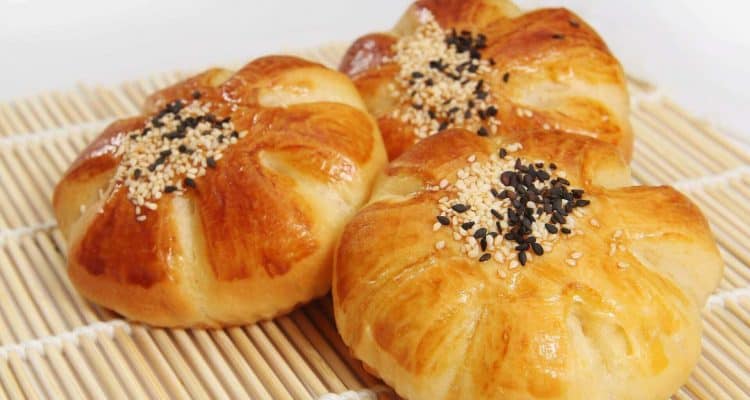A Bundt cake is a cake that is baked in a Bundt pan, shaping it into a distinctive ring shape. The shape is inspired by a traditional European cake known as Gugelhupf, but Bundt cakes are not generally associated with any single recipe. The style of mold in North America was popularized in the 1950s and 1960s, after cookware manufacturer Nordic Ware trademarked the name “Bundt” and began producing Bundt pans from cast aluminum. Publicity from Pillsbury saw the cakes gain widespread popularity.
The Bundt cake derives in part from a European brioche-like cake called Gugelhupf which was particularly popular among Jewish communities in parts of Germany, Austria and Poland.In the north of Germany Gugelhupf is traditionally known as Bundkuchen German pronunciation: , a name formed by joining the two words Bund and Kuchen (cake).
Opinions differ as to the significance of the word Bund. One possibility is that it means “bunch” or “bundle”, and refers to the way the dough is bundled around the tubed center of the pan. It is interesting to note in this respect that in Dutch, the cake is called “tulband,” which is Dutch for ‘turban.’ The pronunciation of the second part of this word is very similar to that of ‘bundt.’ Another source suggests that it describes the banded appearance given to the cake by the fluted sides of the pan, similar to a tied sheaf or bundle of wheat.Some authors have suggested that Bund instead refers to a group of people, and that Bundkuchen is so called because of its suitability for parties and gatherings.
Uses of the word bund outside of Europe to describe cakes can be found in Jewish-American cookbooks from around the start of the 20th century. The alternative spelling “bundte” also appears in a recipe as early as 1901.
Bundt cakes do not conform to any single recipe; instead, their characterizing feature is their shape. A Bundt pan generally has fluted or grooved sides, but its most defining design element is the central tube or “chimney” which leaves a cylindrical hole through the center of the cake. The design means that more of the mixture touches the surface of the pan than in a simple round pan, helping to provide faster and more even heat distribution during cooking. The shape is similar to that of the earlier European Gugelhupf or Bundkuchen. A Gugelhupf differs from contemporary Bundt-style cakes in that it follows a particular yeast-based recipe, with fruit and nuts, and is often deeper in shape and more decorative.
Also similar in shape is the Eastern European Babka, dating from early 18th century Poland.While Babka is associated with Jewish culture, Bundt cake is firmly set in Christian tradition and is traditionally baked for Christmas and Easter.Today, there is no recipe for “Bundt cake”. Anything can be baked in a Bundt-style pan, and is. Recipes range from Pine Nut and Chili cakes to ice cream and fruit concoctions. And, Bundt-style pan design has expanded beyond the original fluted ring to today’s designs of skylines, octopus and cathedrals, all with the requisite hole in the center of the pan made by Nordic Ware and others. Since a toroidal cake is rather difficult to frost, Bundt cakes are typically either dusted with powdered sugar, drizzle-glazed, or served undecorated. Recipes specifically designed for Bundt pans often have a baked-in filling; Bundt pound cakes are also common
